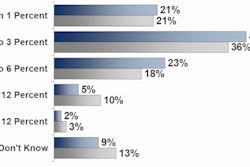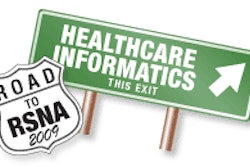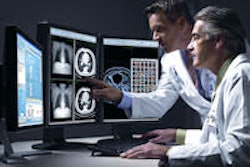Whether a patient, referring physician, or radiology professional, it's not your imagination that recommendations for follow-up exams after an initial radiology procedure seem to be increasing. If the referral patterns of radiologists at Massachusetts General Hospital (MGH) in Boston are typical, the number of recommendations for additional imaging procedures has doubled in the past 13 years.
An analysis of almost 6 million radiology reports of exams performed between 1995 and 2008 revealed this fact, in a study quantifying the rates of recommendations for additional diagnostic imaging based on the effects of 11 clinically relevant factors. The study was published in the November issue of Radiology (2009, Vol. 253:2, pp. 453-461).
MGH pioneered the use of natural language processing (NLP) as a data mining tool of a clinical data repository it established in 1995. The NLP software used by the hospital automates the identification and extraction of data, with an accuracy level of 93% and higher validated in prior published studies.
For this study, researchers queried 5,948,342 reports of diagnostic imaging exams prepared by 555 radiologists and residents to identify the reports that included recommendations for a follow-up exam. Approximately one of every 10 reports, or 627,064, included a recommendation for a follow-up exam. Almost 12% contained two or more recommendations.
From the 627,064 reports, both quantitative and categoric data were extracted and intensively analyzed. A multivariable logistic regression model was used to determine the effect of each of the following factors on the likelihood of recommendations for additional imaging, according to principal investigator Dr. Christopher Sistrom, a visiting research professor at MGH and permanent radiology chief information officer and associate department chairman at the University of Florida Health Center in Gainesville:
|
Trends identified
The unadjusted rate of recommendations for follow-up exams rose from approximately 6% in 1995 to 12% by 2008, according to the authors. The majority of the increase took place in the late 1990s, with a small but sustained increase between 2004 and 2008. With all factors adjusted to being equal, the odds of having a radiology report include at least one follow-up recommendation increased by a factor of 2.16.
Studies that had positive findings were five times more likely to include a follow-up recommendation than exams with negative findings.
PET exams had the highest follow-up recommendation ratio (4.28), followed by CT exams (3.96). When evaluated by body part, breast imaging had the highest ratio (12.38), followed by imaging of the pelvis (5.78). The reports for mammography, which represented 87% of all breast examinations, had a 14.8% follow-up recommendation rate -- not a surprising finding. However, breast MRI and breast ultrasound exam reports had follow-up recommendation rates of 38% and 36%, respectively, for additional imaging, the majority of which were for mammography examinations.
Highest referral percentage by modality, based on originating modality
|
Experience matters: The researchers determined that for every decade of an interpreting radiologist's experience, there was a 15% decline in the likelihood of a report containing a follow-up recommendation, independent of any other factors. Radiologists with 10 to 14 years of experience (including years of medical school and residency) made referral recommendations 13% of the time, on average. This percentage steadily decreased to a low of 6% for radiologists with 45 years of experience.
The recommendation patterns were analyzed from a multispecialty mix of 133 radiologists who interpreted 10,000 or more studies each, representing 83.8% of the exam sample. An additional 193 radiologists and residents interpreted between 1,000 and 9,999 studies, representing 15.3%. The remaining 229 radiologists, presumably residents, performed fewer than 1,000 studies and represented less than 1.0%.
The study did not include any assessment of recommendation frequency of individual radiologists. The authors noted that this type of analysis may start to be undertaken by hospitals as a quality improvement initiative, but it would be quite complex to evaluate as experience, specialty, and case mix would need to be taken into account for each individual radiologist.
The authors attributed the increase in follow-up recommendations in great part to technology improvement, with respect to new types of procedures and diagnostic imaging equipment, the quality of images acquired digitally, and the use of digital workstations and image processing software showing greater anatomical detail. The ability to see more pathology could enable interpreting radiologists to identify a greater number of findings and abnormalities meriting additional investigation, they noted. Concerns about malpractice lawsuits may also have contributed to the increase.
By Cynthia E. Keen
AuntMinnie.com staff writer
November 18, 2009
Related Reading
CAD software can facilitate mining of image data, November 9, 2009
Data mining software has clinical payoff at Montefiore, June 29, 2009
Language processing technology guides pathology, imaging studies, January 24, 2008
Copyright © 2009 AuntMinnie.com



















